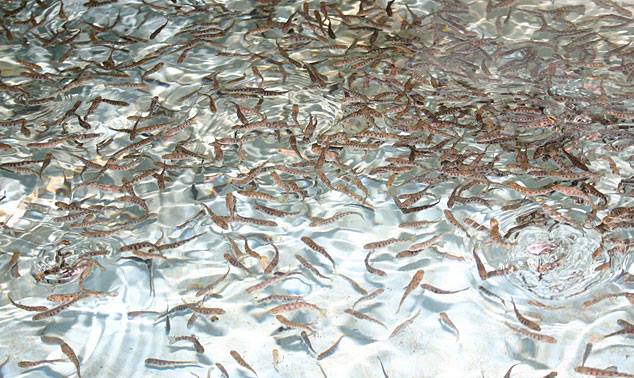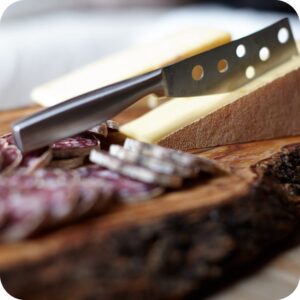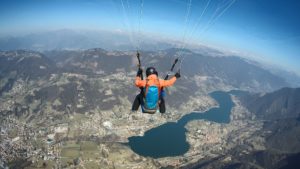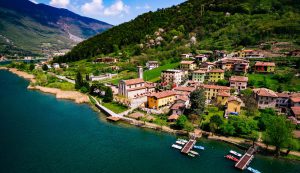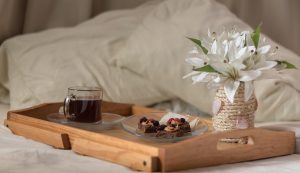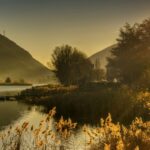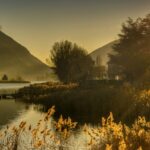The Endine fish hatchery, because of the fish conservation issues it deals with, has an educational value and is a awareness-raising point for schoolchildren who want to visit it. All visiting pupils will be provided with educational material, while stocks last, and the visit and material will be free of charge.
INTRODUCTION
Through fish hatcheries, it is possible to artificially reproduce wild fish, whose genetic make-up and the best possible traits have been selected for that specific environment; it is the only way to produce juvenile fish for restocking species unavailable within common commercial networks.
Another important role of fish hatcheries in the execution of restocking is to decide the best time to release the fish.
The availability of a hatchery in which fish are born and sometimes grown for a certain period makes it possible to choose the most suitable time for stocking, from various points of view: weather conditions, water flow rates, and availability of personnel. Repopulation can be carried out at different times, transporting small numbers of fish, minimising mortality, and becoming a tool to support water management. Scientific research itself can find in these facilities an excellent ichthyology laboratory, where one can study fish about which little is known, but which it is essential to know to manage with the right knowledge.
LOCATION OF THE AREA
The municipality of Endine Gaiano, a little more than one kilometre east of Lake Endine, has made an area of its property with a total surface area of approximately 17,000 square metres available for the construction of the work. This area is adjacent to the multi-purpose sports centre, and the Civil Defence training centre, and is crossed by a cycle/pedestrian path, laying the foundations for excellent use of the fish hatchery. The area is almost flat, characterised by an artificial depression whose outcrop of the surface water table has formed a small pond (surface area of about 4,000 square metres), whose maximum depth is about 3-4 metres, which could become an important basin for breeding and rearing spawners.
FISH SPECIES CONCERNED
For Lake Endine, the most interesting species is undoubtedly Pike, a typical predator of the lake, the original strain of which, probably Pike cisalpinus (Esox cisalpinus) with a livery characterised by light bands or stripes on a dark background, has over the years been polluted by specimens of Pike transalpinus (Esox lucius) with a greenish colouring and yellowish round spots. Other species that can be farmed in the facility, albeit on an experimental basis, are those of small cyprinids, such as the Trigonidae and Alborella, or the Vairone and Sanguinerola, which as ‘forage species’ represent the basis of the freshwater trophic chain, not available within common commercial networks. They are then potentially joined by all the fish species of lacustrine interest (such as, for example, but not limited to Tench, Chub, or Perch) that may be activated about individual planning requirements and according to the degree of future development of the structure, which by nature is highly evolutive.
ACTIVITIES
The fish hatchery envisages the following phases: capture and possible housing of spawners close to complete sexual maturation; artificial reproduction; egg incubation; fry birth and yolk sac reabsorption; fry weaning; seeding and reintroduction into the natural environment.
WATER SUPPLY
Water represents the indispensable element for the operation of a hatchery, both in terms of quantitative availability and chemical-physical quality. To guarantee a sufficient water flow rate for the operation of the plant, a well and a complex adduction and control system must be built. A continuous flow rate must always be guaranteed to feed the plant; a lack of water, even for just a few minutes, can lead to the death of the eggs and make the work of an entire season useless.
The plumbing and electrical systems of the facility are the heart of the system and determine its functional success. This element represents the greatest expense for which the highest quality components must be sought.
SYSTEM DESCRIPTION
The buildings forming the core of the hatchery are laid on a reinforced concrete slab. The elevated structures are instead made of wood with light solutions that are well suited to the landscaping and perform the function of covering and closing without significantly affecting the construction costs and still leaving a margin of readjustment over time. The installation consists of two communicating rooms with a square plan and a total area of approximately 50 square metres of floor space (two rooms of 25 square metres each).
For more information, call +39 035232586, from Monday to Friday, from 8.30 a.m. to 12.30 p.m.
